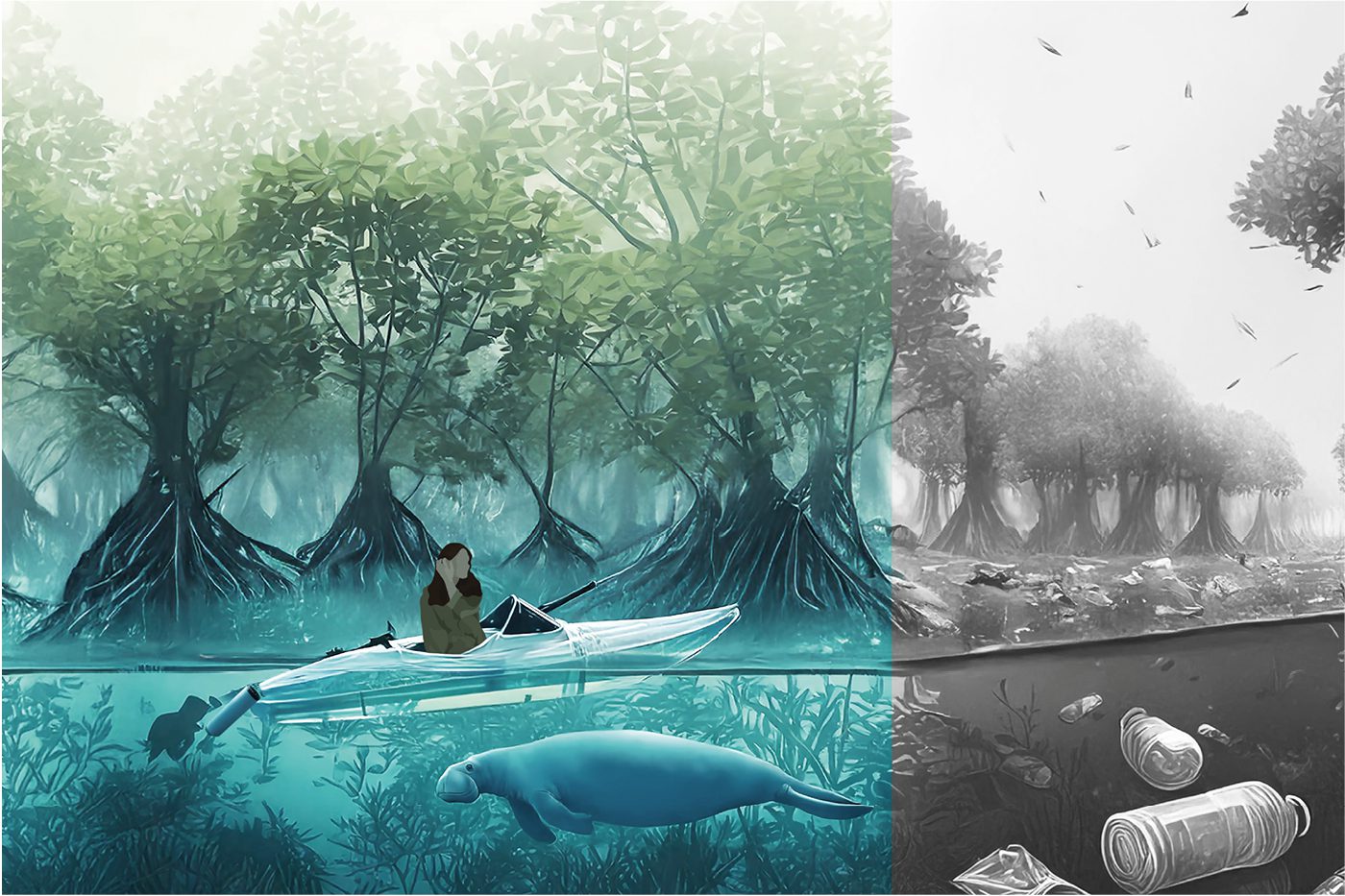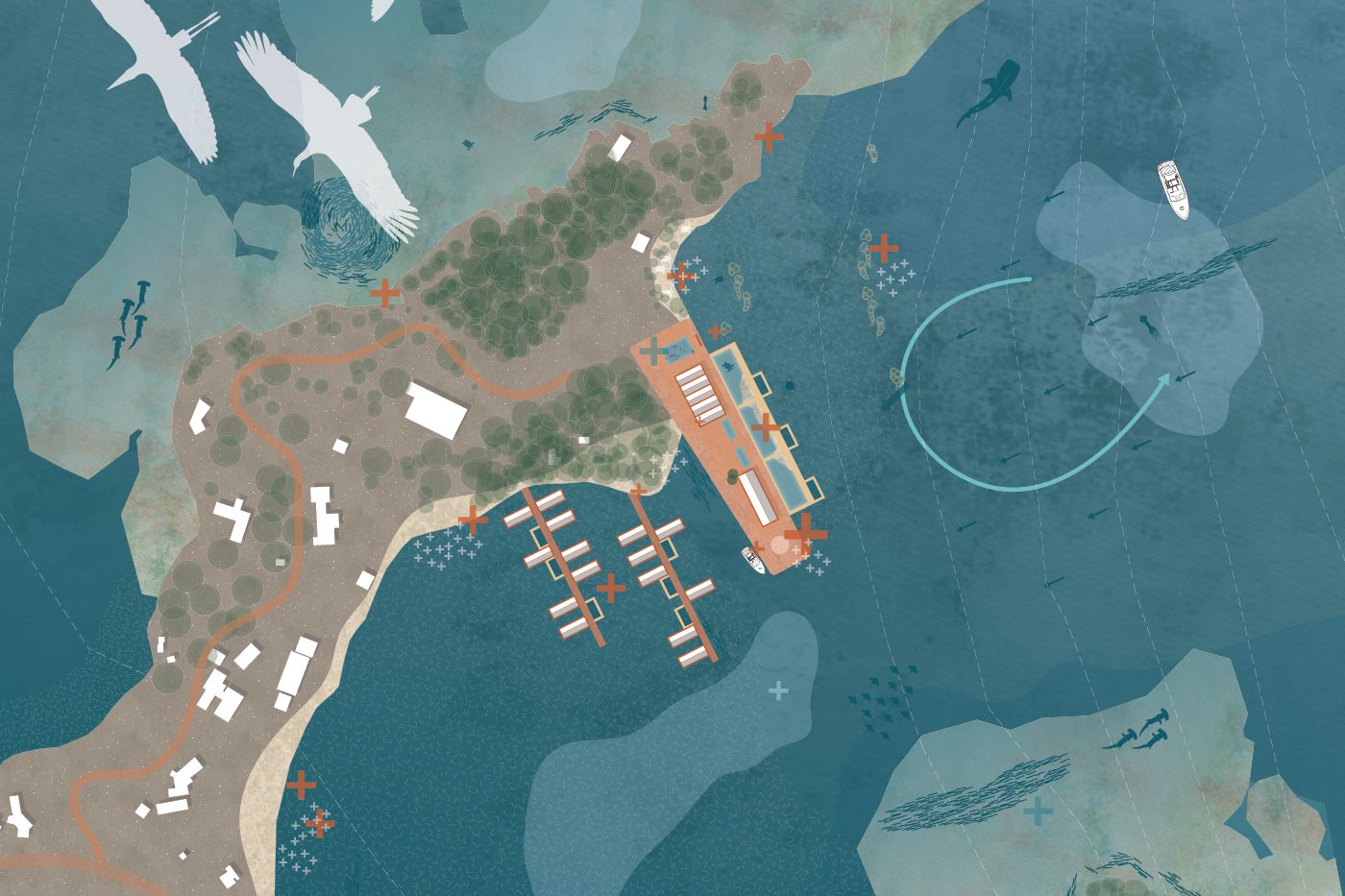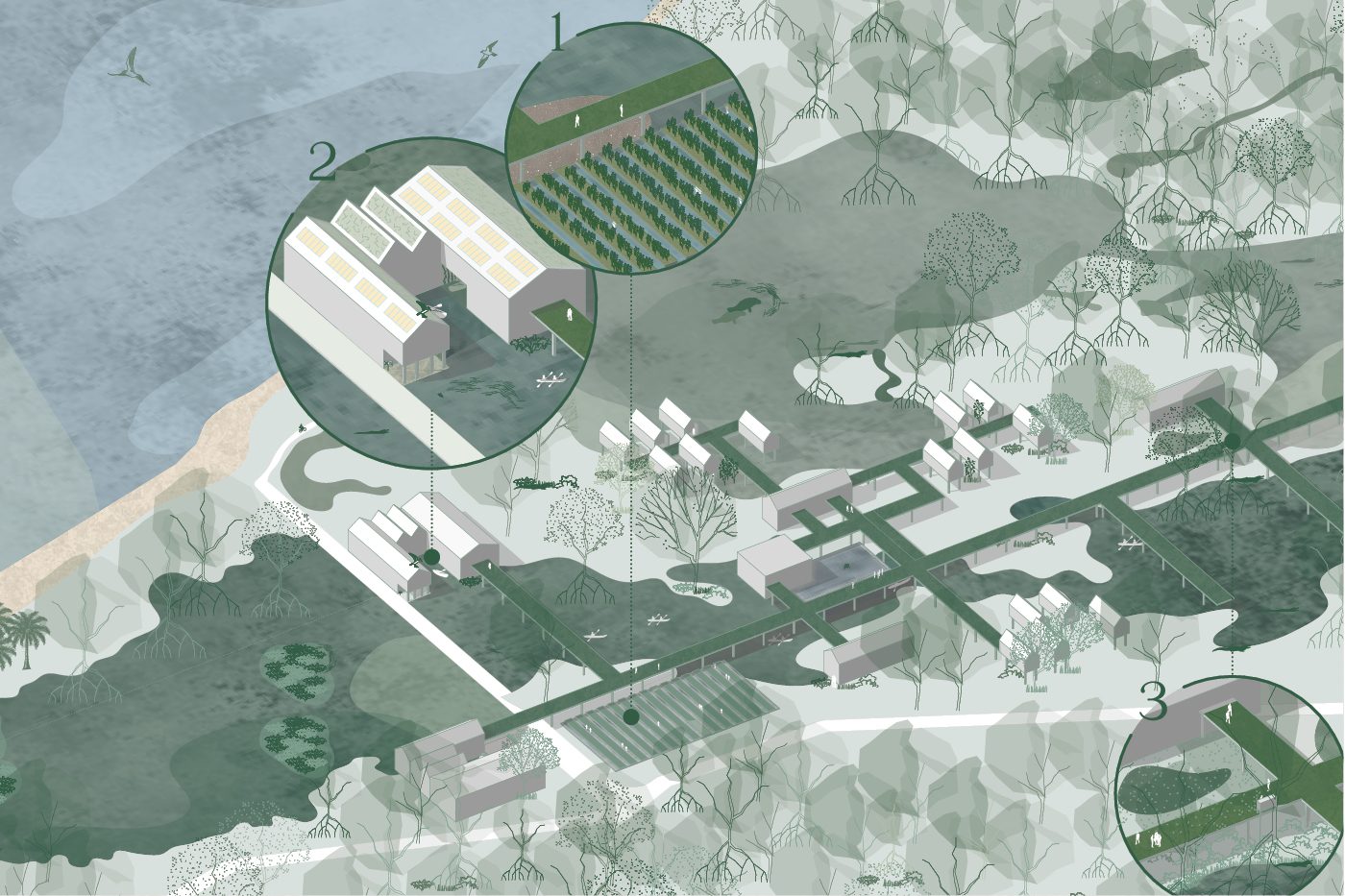Project implementation: Jamaica
Project development: Germany
Student: Vanessa Verona Herold
Supervision: R. Radulova-Stahmer & V. Katthagen
Living Coast – Anchoring Jamaica’s Future is a visionary design proposal dedicated to regenerating and protecting Jamaica’s fragile coastal ecosystems. Conceived as a network of seven rehabilitation stations, the project stretches along the island’s shoreline and addresses diverse habitats: urban waterfronts, mangroves, brackish water zones, seagrass beds and coral reefs, deep-sea environments, and sandy and rocky shores. Each station acts as an anchor point, strategically designed to meet the challenges of its specific environment while contributing to a larger, interconnected system of recovery.
The interventions unite climate adaptation, ecosystem restoration, and community engagement. Floating wetlands filter water and create habitats for aquatic species; bio-active wave breakers protect coastlines while hosting marine biodiversity; mangrove and coral nurseries cultivate life for reintroduction into degraded areas. Animal rescue pools, ecological bridges, and microfilter kayaks illustrate how nature-based strategies can merge with architecture and landscape design. These examples are part of a wider vision: taken together, the seven stations form a holistic, transferable framework that strengthens resilience and redefines how humans interact with coastal landscapes.
While all stations were conceptually explored, three were studied in greater depth to exemplify the strategic approach: the Mangrove Station in Jackson Bay, where nurseries and stilted walkways restore a vital carbon sink; the Sandy and Rocky Shoreline Station in Unity Bay, where the coast and sea turtles are protected through bio-active defenses and a rescue center; and the Estuary Station in Buff Bay, where ecological bridges and water delay pools revitalize fragile river mouths. Together, they demonstrate how locally tailored strategies become part of one living system.
Behind this project stands Vanessa Verona Herold, a German-Jamaican Master’s student of Architecture at the Jade University of Applied Sciences in Oldenburg, Germany. After completing her Bachelor’s degree with distinction, she is currently finalizing her Master’s thesis with outstanding results. Her earlier studies in Art, Media, Philosophy, and Ethics have shaped a creative yet reflective design approach, balancing artistic imagination with a deep sense of ecological responsibility. With a focus on public cultural buildings and urban design, she consistently integrates social and environmental dimensions into her work.
The project was developed within the Master’s course “Individual Design Project” under the guidance of Prof. Dr.-Ing. Radostina Radulova-Stahmer (Regenerative Urban Design) and Prof. Dipl.-Ing. M.Sc. Volker Katthagen (Urban Design and Landscape Planning). Both encouraged her to explore the intersection of architecture, ecology, and community, while she independently conceived and developed the concept.
For Herold, Living Coast is more than an academic exercise — it is a personal vision deeply connected to her Jamaican heritage and her conviction that sustainability in architecture must extend beyond human-centered design. “Sustainability,” she emphasizes, “is not optional. It is a fundamental responsibility — to future generations, to the past we honor, and to the ecosystems we depend on.”
By anchoring ecological recovery along Jamaica’s shores, Living Coast offers not only a hopeful blueprint for biodiversity conservation and climate resilience but also a scalable strategy for coastal regions worldwide — a promise to safeguard the island’s natural wealth and inspire sustainable futures for generations to come.




